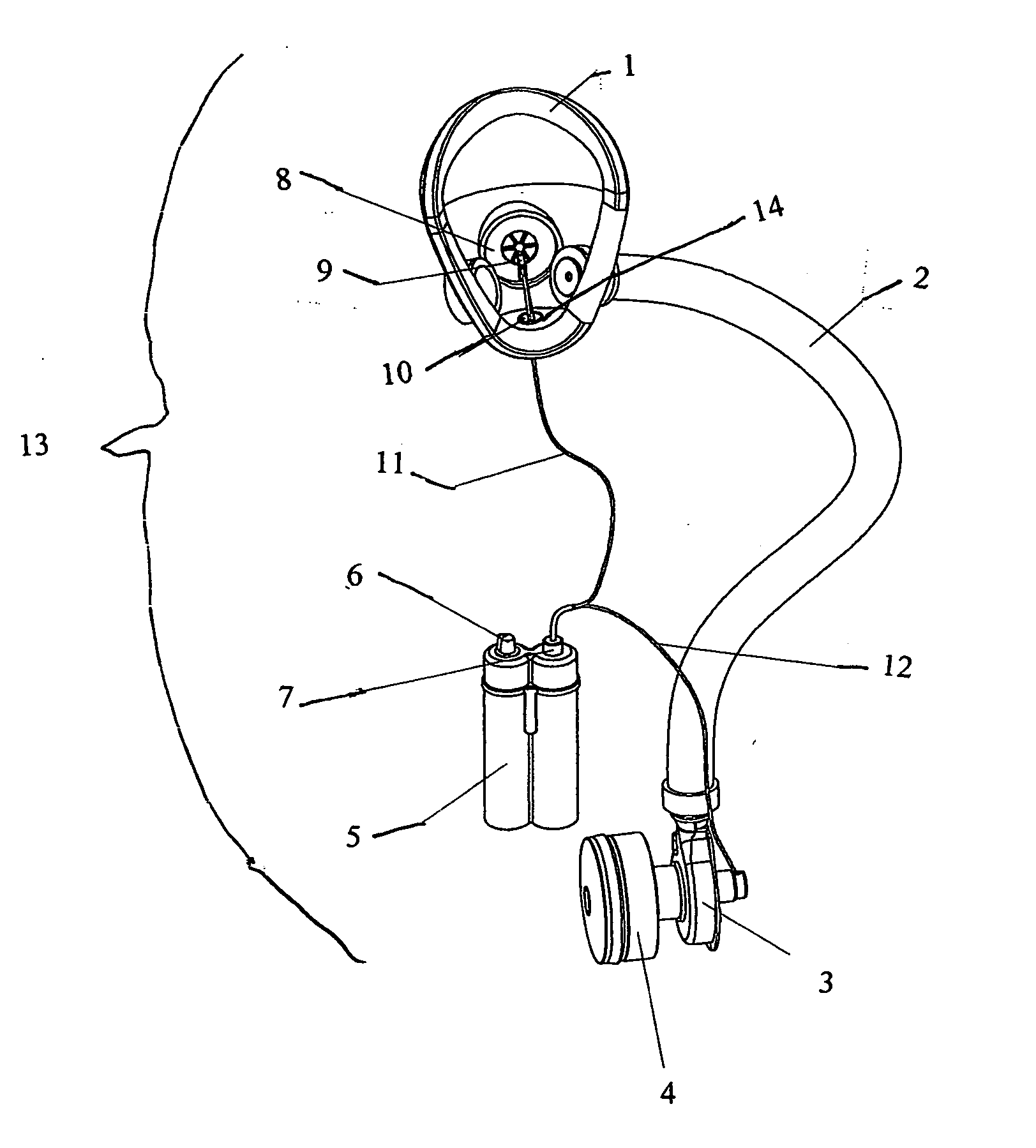Breath responsive filter blower respirator system
a respirator and filter blower technology, applied in the direction of respirator, valve, mechanical equipment, etc., can solve the problems of limiting the applicability of conventional paprs, toxins and materials are hazardous to respiratory systems, and many drawbacks of conventional paprs, so as to reduce the air pressure and increase the operational life of the power sour
- Summary
- Abstract
- Description
- Claims
- Application Information
AI Technical Summary
Benefits of technology
Problems solved by technology
Method used
Image
Examples
Embodiment Construction
[0018] The invention disclosed herein improves the state of PAPR technology. In operation a pressure sensor and optoelectronic device of the present invention work individually or cooperatively to detect air pressure in a gas mask and to send informational signals to a processor. The processor receives the informational signals, interprets the signals, and transmits subsequent signals to turn-on / turn-off or increase / decrease air flow from an air blower. When the pressure of filtered air in the gas mask is at a relatively high level, which makes it difficult for the user to breathe, the transmitted signals are used to instruct the air blower to cease or reduce air flow to the mask. Conversely, when the pressure in the mask reaches a predetermined and relatively low level, the transmitted signals are used to instruct the air blower to increase air flow to the mask. In addition, to enhance the ability of the user to breathe, the present invention facilitates an increased operational ti...
PUM
 Login to View More
Login to View More Abstract
Description
Claims
Application Information
 Login to View More
Login to View More - R&D
- Intellectual Property
- Life Sciences
- Materials
- Tech Scout
- Unparalleled Data Quality
- Higher Quality Content
- 60% Fewer Hallucinations
Browse by: Latest US Patents, China's latest patents, Technical Efficacy Thesaurus, Application Domain, Technology Topic, Popular Technical Reports.
© 2025 PatSnap. All rights reserved.Legal|Privacy policy|Modern Slavery Act Transparency Statement|Sitemap|About US| Contact US: help@patsnap.com



